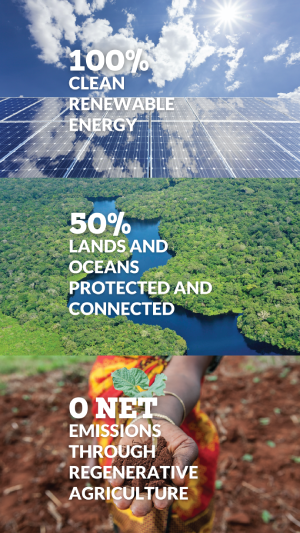In 2018, the IPCC special report Global Warming of 1.5° C showed that it becomes increasingly difficult to solve climate change beyond the threshold of 1.5° C in global average temperature rise, and every tenth of a degree increase in temperature risks devastating climate impacts. However, at the time the report came out, there was no scientific model to demonstrate how this ambitious target could be achieved using only existing and scalable solutions without overshooting the 1.5° C limit.
There is now. 17 leading scientists at the University of Technology Sydney (UTS), two institutes at the German Aerospace Center (DLR), and the University of Melbourne’s Climate & Energy College have collaborated to create a transition scenario to achieve 1.5° C. The 2019 book, Achieving the Paris Climate Agreement Goals, was released by the prestigious scientific publisher Springer Nature, and quickly became the most downloaded climate text in the publisher’s history.
The model demonstrates that:
- It is possible to meet all of our energy needs with 100% clean, renewable energy by 2050 using energy efficiency measures and existing technologies while still ensuring a just energy transition that supports, rather than exploits, the most vulnerable populations.
- The global energy transition to 100% renewable energy will cost just $1.1 trillion a year — a bit more than half of US President Biden’s COVID relief bill and much, much less than the people of the world are paying now for the current fossil-fuel based system.
- Nature-based solutions like restoration will be crucial to achieving the Paris climate agreement goals by removing excess carbon from the atmosphere, making the 1.5° C limit possible.
The solutions for the climate crisis already exist, and the latest science shows we can achieve the 1.5° C limit through three pillars of action:
- A global energy shift to 100% renewable and sustainable sources by 2050
- Protection and restoration of half of the world’s lands and oceans
- A transition to regenerative, climate-friendly agriculture
The articles here discuss the learnings and data from collective scientific studies on the climate crisis. The focus is primarily on heat, power, transport, and efficiency. The scientists involved have created models intended to give policy makers the information they have been sorely lacking in order to make decisions about what must be done – immediately – to address the climate crisis. Read on to learn more.



